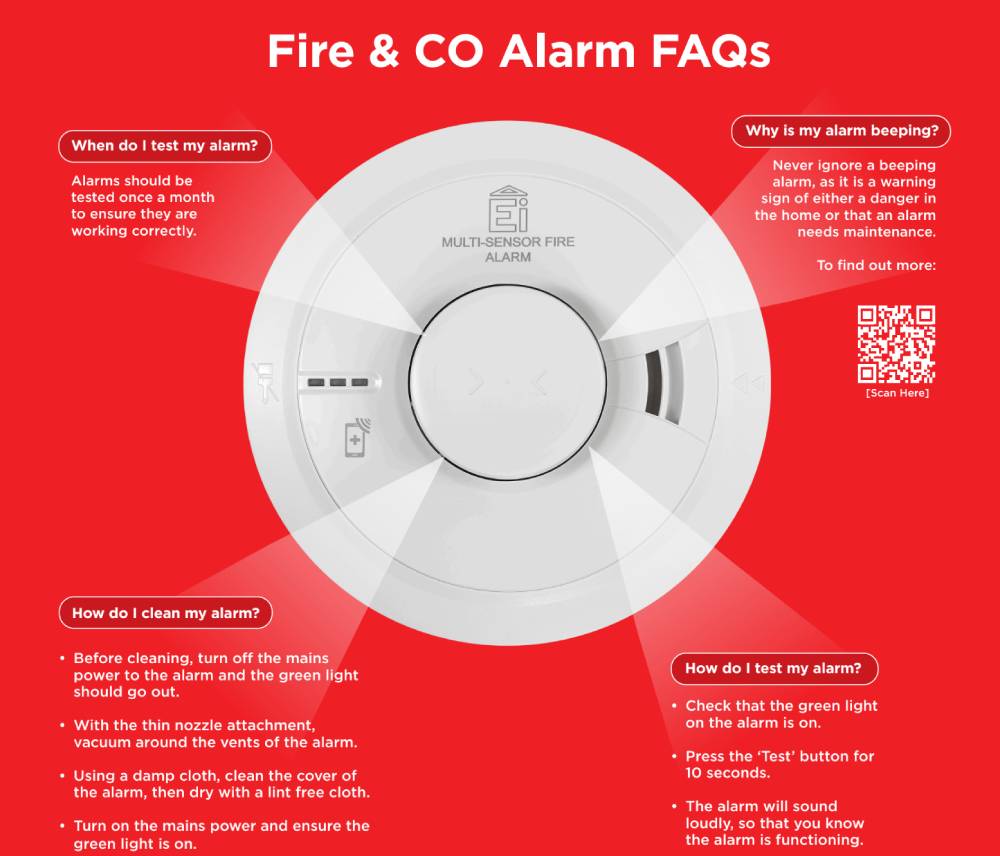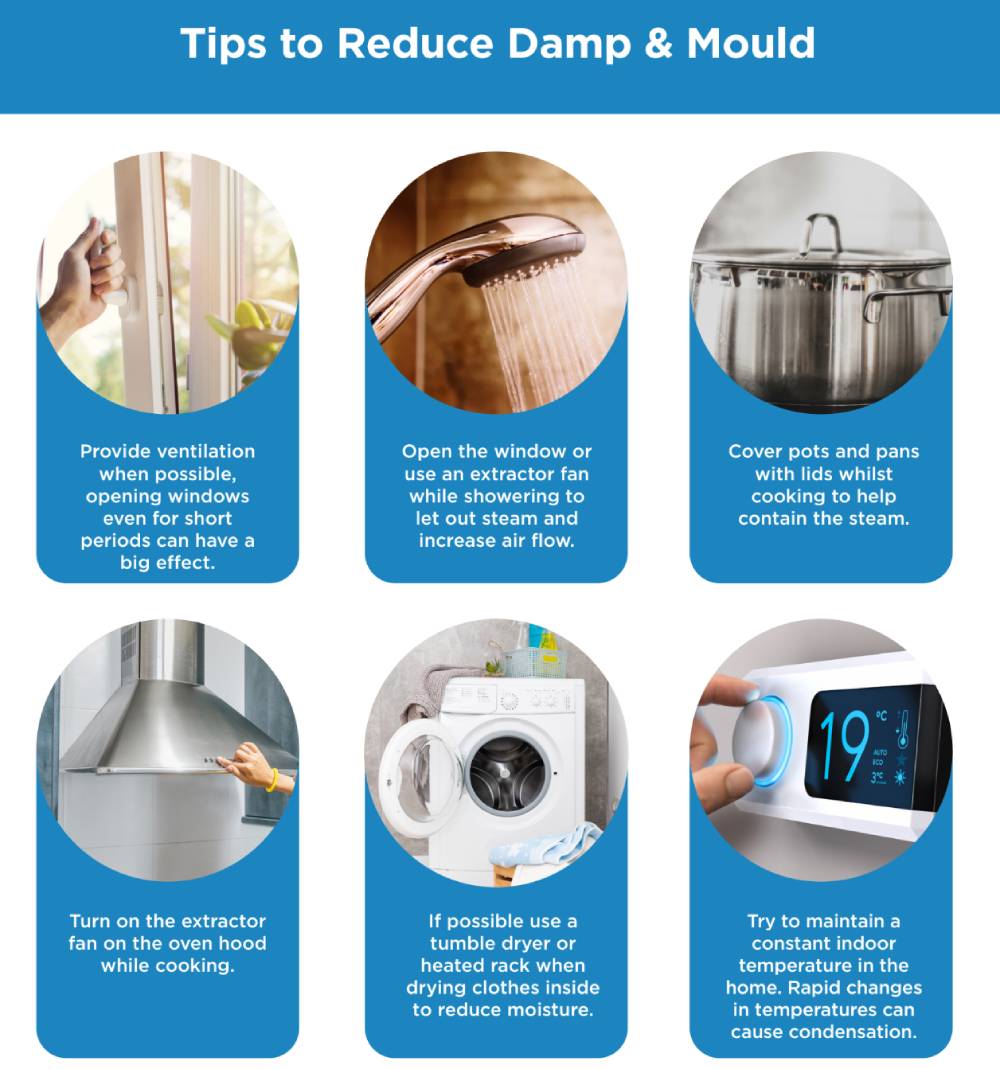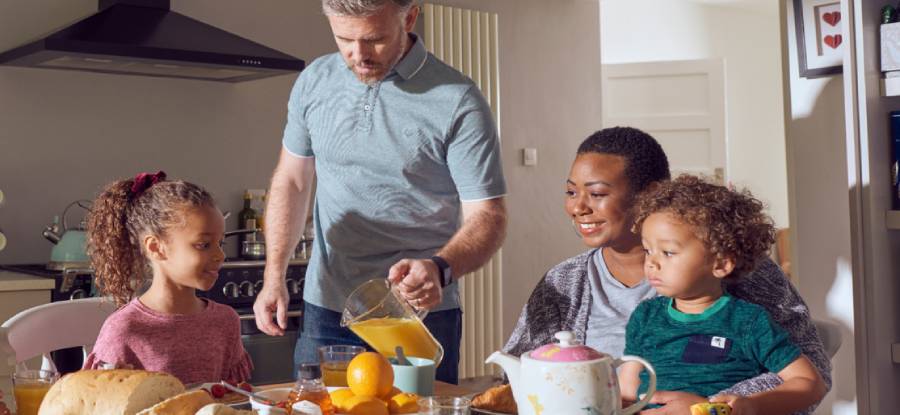When it comes to home life safety, you can never be too careful; in this article, we are compiling some of the best home life safety tips from Aico to keep you safe at home.
Read the questions, answers, and tips below in order to be safe at home regarding electrical and fire safety.
- Tips on home life safety (by Aico)
- Fire alarms and CO alarms FAQ
- Carbon Monoxide: dangers and symptoms
- Tips to reduce damp and mold at home
Home Life Safety Tips by Aico
Make sure your alarms work!
First of all, in regards to your fire alarms and CO alarms, you need to make sure that your alarms work properly! It is essential to protect your home by having working smoke alarms installed throughout.
Smoke alarms are the first responder in the event of a fire, so it is vital that you have adequate protection that is working properly.
Check your electrical appliances!
With technology and electrical devices now playing a large part in our lives, our homes are more at risk from electrical fires. Please mind the fire safety advice.
Plan an escape route!
Establishing a clear fire escape plan is important, so you know how to evacuate your home in the event of a fire. Make sure that you keep all exits clear.
Cook safely
Around half of house fires are caused by cooking accidents. Cooking can be a pleasant and fun activity, but you need to make sure you cook safely.
Which alarm where?
It is good to know where to install the alarms and which ones should be where. Smoke alarms are suitable for hallways, landing, living room, dining room, and bedroom. Heat alarms are ideal for kitchens, as they are activated by heat from a fire, not smoke. Carbon monoxide alarms are suitable for rooms with fuel-burning appliances, main living areas, and bedrooms.
Fire Alarms and CO Alarms: FAQ

With regard to the fire alarms, smoke alarms, heat alarms, and carbon monoxide alarms, there are a few questions everyone has. Here are the most frequently asked questions regarding fire alarms and CO alarms at home.
When do I test my alarm?
The fire alarms, smoke alarms, heat alarms, and CO alarms should be tested once a month to make sure they are working correctly. It is sometimes good to set up a monthly reminder at a time you know you're home in order to make sure the testing is done.
How do I test my alarm?
This is a very good question. First, you need to check that the green light on the alarm is on; this means that the alarm can be tested. Then, press the "Test" button for 10 seconds. The alarm will sound loudly so that you know that it is functioning.
Why is my alarm beeping?
If your alarm is beeping, you should not ignore it. Many times it is a warning sign of either a danger in the home (such as high levels of smoke, heat, or Carbon Monoxide levels being detected) or that the alarm needs maintenance.
How do I clean my alarm?
Before you can clean the alarm, it is best to turn off the mains power to the alarm, and the green light should go out. Then, with the thin nozzle attachment, vacuum around the vents of the alarm. Using a damp cloth, clean the cover of the alarm, then dry it with a lint-free cloth. You can then turn on the main power and ensure that the green light is on.
Carbon Monoxide - know the Dangers of Carbon Monoxide (CO)
Do you know the dangers of Carbon Monoxide (CO), also called "the silent killer"? Carbon monoxide is an extremely poisonous gas that is tasteless, odourless, and colourless. The incomplete burning of fossil fuels, such as gas, wood, and coal produces CO. The best way to stay protected from CO poisoning is with a Carbon Monoxide Alarm. At Sparks, we sell a wide range of Carbon Monoxide Alarms here.
The 6 Symptoms of Carbon Monoxide Poisoning

It is good to know what are the six main symptoms of Carbon Monoxide poisoning. You do not see, taste, or smell the carbon monoxide, but if you have the following symptoms, there is a high chance you experience Carbon Monoxide poisoning.
- Unconsciousness
- Collapse
- Dizziness
- Breathlessness
- Headache
- Nausea
What do do in the event of a Carbon Monoxide Emergency?
In the event of a Carbon Monoxide emergency, you need to do the following:
- Open all nearby windows and doors to allow fresh air to ventilate the property.
- Evacuate your home and leave all the windows and doors open.
- If safe to do so, turn off all fuel-burning appliances.
- Alert the National Gas Service and call 0800 111 999.
Tips to Reduce Damp and Mould at Home

Especially during the wet months of the year and when it is cold outside, it is easy to just close the windows and not ventilate, and therefore dampness and mould can appear.
Dampness cannot be avoided, but mould can and should be avoided at all times. Here are some tips to reduce damp and mould at home:
- Provide ventilation when possible, opening windows even for short periods can have a big effect.
- Open the window or use an extractor fan while showering to let out the steam and increase airflow.
- Cover pots and pans with lids whilst cooking to help contain the steam.
- Turn on the extractor fan or the oven hood while cooking in order to extract and eliminate some of the steam, vapours, and smell.
- If possible, use a tumble dryer or heated rack when drying clothes inside, in order to reduce moisture.
- Try to maintain a constant indoor temperature in the home, since rapid changes in temperatures can cause condensation.
The above guide and tips can be found via Aico's Home Life Safety Tips Pocket Guide, to be downloaded via their website.
Buy Domestic Fire and CO Alarms
At Sparks, we sell a wide range of Aico Domestic alarms, and via Ventilation, you can find a good selection of bathroom extractor fans and whole-home ventilation solutions.




